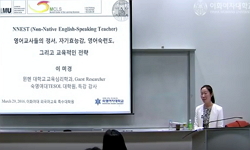This study was conducted to find out the relationship between dental anxiety and self-efficacy, physical and psychological condition and expected self-efficacy. The objective of this study was also to provide foundation for appropriate dental hygiene ...
http://chineseinput.net/에서 pinyin(병음)방식으로 중국어를 변환할 수 있습니다.
변환된 중국어를 복사하여 사용하시면 됩니다.
- 中文 을 입력하시려면 zhongwen을 입력하시고 space를누르시면됩니다.
- 北京 을 입력하시려면 beijing을 입력하시고 space를 누르시면 됩니다.

스켈링 처치 시 대상자가 느끼는 치과불안도와 자기효능감의 관련성 = Relationship between dental anxiety and self-efficacy that patients feel while dental hygienist conduct scaling
한글로보기https://www.riss.kr/link?id=A101974308
- 저자
- 발행기관
- 학술지명
- 권호사항
-
발행연도
2009
-
작성언어
-
-
주제어
스켈링 ; 치과불안도 ; 자기효능감 ; dental anxiety ; scaling ; self-efficacy
-
KDC
500
-
등재정보
KCI등재
-
자료형태
학술저널
- 발행기관 URL
-
수록면
1-13(13쪽)
- 제공처
-
0
상세조회 -
0
다운로드
부가정보
다국어 초록 (Multilingual Abstract)
This study was conducted to find out the relationship between dental anxiety and self-efficacy, physical and psychological condition and expected self-efficacy. The objective of this study was also to provide foundation for appropriate dental hygiene intervention model for scaling. In this study, anxiety reactions were measured among 178 patients, who made appointment with dental hygienists for scaling between May and July, 2009. The analysis was done in SPSS 12.0 statistical program which confirmed Cranach`s alpha value. Technical statistics, t-test and One-way ANOVA, correlation and regression were also used. The result of the study is following: While dental hygienist conducts scaling, the dental anxiety was each measured in following categories: Thus male, age between 40 and 50, single, high school graduated and unemployed were measured highest dental anxiety among various groups. Dental Fear Scale demonstrated the validity of relationship between dental anxiety and self efficacy. The correlation was equated as r=-.409(p<0.01). In the other words, the higher self efficacy, the lower dental anxiety. The relationship between dental anxiety and physical and physiological condition was relevant. Physical condition was r=-.229(p<0.01) And then, the psychological condition was r=-.299(p<0.01). Thus, better physical and physiological condition results in less dental anxiety. The relationship between expected self-efficacy and dental anxiety is also valid. The dental anxiety after performance accomplishment is r=-.239(p<0.01), after vicarious experience is r=-.195(p<0.01), after verbal persuasion is r=-.152(p<0.05), after recognition of physiological state is r=-.410(p<0.01). In conclusion, Sex, age, marital status, education level, employment, physical condition, physiological condition are all relevant to dental anxiety(F=8.834). Both independent and dependent variables p<.05 have 37.5% persuasiveness.
동일학술지(권/호) 다른 논문
-
치과내원 환자의 올리어리(O`Leary) 지수와 개별치아의 치면세균막 지수에 관한 연구
- 한국치위생학회
- 조평규 ( Pyeong Kyu Cho )
- 2009
- KCI등재
-
- 한국치위생학회
- 김정숙 ( Jeong Suk Kim )
- 2009
- KCI등재
-
임플란트 환자의 일반적 특성 및 구강관심도에 따른 기능별 만족도 연구
- 한국치위생학회
- 유은미 ( Eun Mi Yoo )
- 2009
- KCI등재
-
- 한국치위생학회
- 이연경 ( Yeun Kyoung Lee )
- 2009
- KCI등재




 ScienceON
ScienceON KISS
KISS






